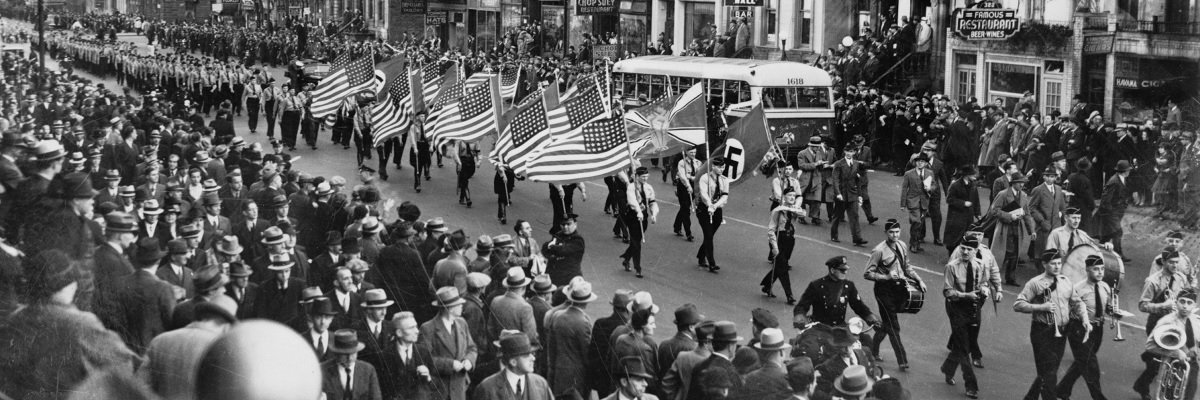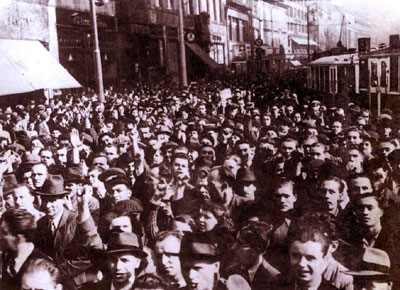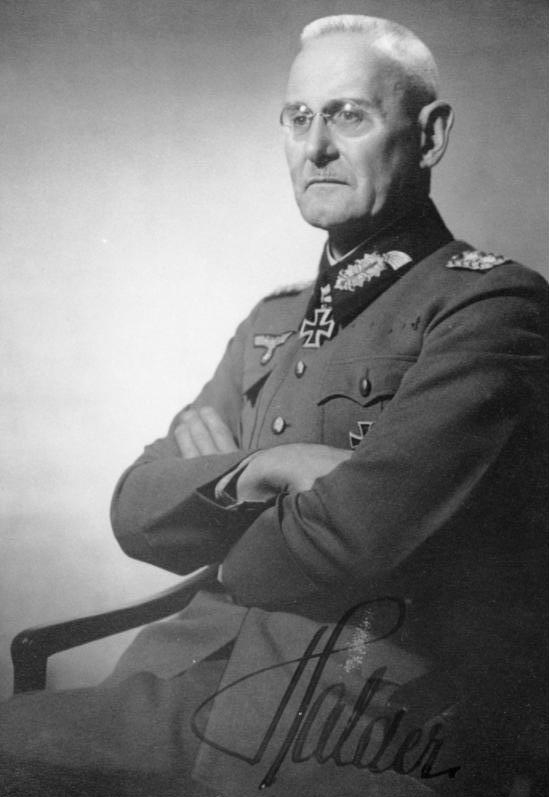Post by lordroel on Sept 26, 2018 15:52:12 GMT
World War II in real time

This thread is about World War II in real time either using YouTube, Wikipedia ore other sources, several listed below.
The Youtube clips come from this YouTube channel (World War Two)
Navy Department Communiques 301-600 and Pacific Fleet Communiques
Onwar.com (Chronology of World War II)
Battle of Normandy day after day
World War II Realtime Instagram Account
This day in the war in the Pacific 65 years ago
This day in the war in Europe 65 years ago
WORLD WAR II DAY-BY-DAY
United States Army World War, 1939 to 1945
U.S. Army Air Forces in World War II Combat Chronology
The Official Chronology of the U.S. Navy in World War II
Day 1 of World War II, September 1st 1939
YouTube (The Polish-German War)
Invasion of Poland
At 0445 hours German forces invade Poland without a declaration of war. The operation is code named Fall Weiss (Plan White). The Germans allot 52 divisions for the invasion (some 1.5 million men), including the 6 armored divisions and all their motorized units. Of the divisions left to defend against an Anglo-French front, only about 10 are regarded by the Germans as being fit for any kind of action. General Brauchitsch, the Commander-in-Chief of the German Army, is in command of the campaign. Bock leads Army Group North, consisting of the 4th Army (Kuchler) and 3rd Army (Kluge); Rundstedt leads Army Group South, consisting of 8th Army (Balskowitz), 10th Army (Reichenau) and 14th Army (List). Air support comes from two Air Fleets, commanded by Kesselring and Lohr, which have around 1,600 aircraft. Army Group South, advancing from Silesia, is to provide the main German attacks. The 8th Army on the left is to move toward Poznan, the principal thrust is to be delivered by 10th Army which is to advance in the center to the Vistula River between Warsaw and Sandomierz, while 14th Army on the right moves toward Krakow and the Carpathian flank. The 4th Army from East Prussia is to move south toward Warsaw and the line to the Bug River to the east; 3rd Army is to cross the Polish Corridor and join 4th Army in moving south. The Poles have 23 regular infantry divisions prepared with 7 more assembling, 1 weak armored division and an inadequate supply of artillery. They also have a considerable force of cavalry. The reserve units were only called up on August 30th and are not ready for combat. In the air, almost all the 500 Polish planes are obsolete and prove unable to blunt the impact of the German attack. During the day, the Luftwaffe launches air strikes on Warsaw, Lodz and Krakow. The Polish Commander in Chief, Marshal Rydz-Smigly, has deployed the stronger parts of his army in the northwestern half of the country, including large forces in the Poznan area and the Polish Corridor. He hopes to hold the Germans to only gradual gains. All along the front the superior training, equipment and strength of the Germans quickly brings them the advantage in the first battles. Many Polish units are overrun before their reinforcements from the reserve mobilization can arrive. At sea, as in the air, Polish technical inferiority leads to crushing early defeats. Three of the four Polish destroyers manage to leave for Britain before hostilities begin and later one submarine also escapes. On the first day the old pre-Dreadnought battleship, Schleswig-Holstein, bombards the Polish naval base at Westerplatte.
Germany
Officials claim that Polish army regulars started firing on Germans along the frontier and that the fire was returned beginning at 0445 hours. Hitler addresses the Reichstag during the day, declaring "I am determined to eliminate from the German frontiers the element of insecurity, the atmosphere which permanently resembles that of civil war."
Poland
The Polish government appeals for British and French intervention under the terms of the Mutual Assistance Treaties.
United Kingdom
The British government demands a German withdrawal from Poland.
Because of the fear of air attacks, the evacuation of young children from London and other supposedly vulnerable areas is begun. General mobilization is proclaimed. (The Royal Navy was mobilized on August 31st.) Air Raid Precautions (ARP) are introduced and a "blackout" enforced from sunset. British railways are taken under government control.
France
The French government demands a German withdrawal from Poland.
General mobilization and a "state of siege" (martial law) are proclaimed.
Italy
The Italian government announces that it will not take any military initiative.
Soviet Union
In the Soviet Union... The armed forces are mobilized and the draft age is lowered from 21 to 19.
United States
President Roosevelt calls for a ban on indiscriminate bombing of civilians and undefended towns.
Norway
In Oslo... The Norwegian government declares its neutrality.
Day 8 of World War II, September 8th 1939
YouTube (World War Two begins)
Day 15 of World War II, September 15th 1939
YouTube (Poland on Her Own)
Day 22 of World War II, September 22nd 1939
YouTube (The Russians are Coming! - The Soviet Invasion of Poland)

This thread is about World War II in real time either using YouTube, Wikipedia ore other sources, several listed below.
The Youtube clips come from this YouTube channel (World War Two)
Navy Department Communiques 301-600 and Pacific Fleet Communiques
Onwar.com (Chronology of World War II)
Battle of Normandy day after day
World War II Realtime Instagram Account
This day in the war in the Pacific 65 years ago
This day in the war in Europe 65 years ago
WORLD WAR II DAY-BY-DAY
United States Army World War, 1939 to 1945
U.S. Army Air Forces in World War II Combat Chronology
The Official Chronology of the U.S. Navy in World War II
Day 1 of World War II, September 1st 1939
YouTube (The Polish-German War)
Invasion of Poland
At 0445 hours German forces invade Poland without a declaration of war. The operation is code named Fall Weiss (Plan White). The Germans allot 52 divisions for the invasion (some 1.5 million men), including the 6 armored divisions and all their motorized units. Of the divisions left to defend against an Anglo-French front, only about 10 are regarded by the Germans as being fit for any kind of action. General Brauchitsch, the Commander-in-Chief of the German Army, is in command of the campaign. Bock leads Army Group North, consisting of the 4th Army (Kuchler) and 3rd Army (Kluge); Rundstedt leads Army Group South, consisting of 8th Army (Balskowitz), 10th Army (Reichenau) and 14th Army (List). Air support comes from two Air Fleets, commanded by Kesselring and Lohr, which have around 1,600 aircraft. Army Group South, advancing from Silesia, is to provide the main German attacks. The 8th Army on the left is to move toward Poznan, the principal thrust is to be delivered by 10th Army which is to advance in the center to the Vistula River between Warsaw and Sandomierz, while 14th Army on the right moves toward Krakow and the Carpathian flank. The 4th Army from East Prussia is to move south toward Warsaw and the line to the Bug River to the east; 3rd Army is to cross the Polish Corridor and join 4th Army in moving south. The Poles have 23 regular infantry divisions prepared with 7 more assembling, 1 weak armored division and an inadequate supply of artillery. They also have a considerable force of cavalry. The reserve units were only called up on August 30th and are not ready for combat. In the air, almost all the 500 Polish planes are obsolete and prove unable to blunt the impact of the German attack. During the day, the Luftwaffe launches air strikes on Warsaw, Lodz and Krakow. The Polish Commander in Chief, Marshal Rydz-Smigly, has deployed the stronger parts of his army in the northwestern half of the country, including large forces in the Poznan area and the Polish Corridor. He hopes to hold the Germans to only gradual gains. All along the front the superior training, equipment and strength of the Germans quickly brings them the advantage in the first battles. Many Polish units are overrun before their reinforcements from the reserve mobilization can arrive. At sea, as in the air, Polish technical inferiority leads to crushing early defeats. Three of the four Polish destroyers manage to leave for Britain before hostilities begin and later one submarine also escapes. On the first day the old pre-Dreadnought battleship, Schleswig-Holstein, bombards the Polish naval base at Westerplatte.
Germany
Officials claim that Polish army regulars started firing on Germans along the frontier and that the fire was returned beginning at 0445 hours. Hitler addresses the Reichstag during the day, declaring "I am determined to eliminate from the German frontiers the element of insecurity, the atmosphere which permanently resembles that of civil war."
Poland
The Polish government appeals for British and French intervention under the terms of the Mutual Assistance Treaties.
United Kingdom
The British government demands a German withdrawal from Poland.
Because of the fear of air attacks, the evacuation of young children from London and other supposedly vulnerable areas is begun. General mobilization is proclaimed. (The Royal Navy was mobilized on August 31st.) Air Raid Precautions (ARP) are introduced and a "blackout" enforced from sunset. British railways are taken under government control.
France
The French government demands a German withdrawal from Poland.
General mobilization and a "state of siege" (martial law) are proclaimed.
Italy
The Italian government announces that it will not take any military initiative.
Soviet Union
In the Soviet Union... The armed forces are mobilized and the draft age is lowered from 21 to 19.
United States
President Roosevelt calls for a ban on indiscriminate bombing of civilians and undefended towns.
Norway
In Oslo... The Norwegian government declares its neutrality.
Day 8 of World War II, September 8th 1939
YouTube (World War Two begins)
Day 15 of World War II, September 15th 1939
YouTube (Poland on Her Own)
Day 22 of World War II, September 22nd 1939
YouTube (The Russians are Coming! - The Soviet Invasion of Poland)











